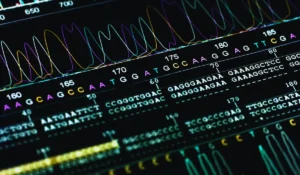What is Friedreich’s ataxia?
Friedreich’s ataxia is a disorder in which the regular function of mitochondria is impaired resulting in damage to several organ systems especially the nervous system causing ataxia or uncoordinated muscle movement.
It also affects the heart and pancreas. This disease is named after Nikolaus Friedreich, a German physician who is the one who describes this condition around 150 years ago.
So, in general cases, there is a gene called FXN gene found on chromosome 9 which encodes Frataxin, which is a mitochondrial protein.
The amount of Frataxin protein varies with tissues and tissues such as the nervous system, pancreas and heart have a lot of Frataxin content in it.
What Frataxin does is, it helps to compile cofactors such as iron-sulfur clusters, which are mixtures of iron and sulfur that become a part of enzymes having several functions like electron transfer which is an important part of mitochondrial ATP production.
What causes Friedreich’s ataxia?
So, Friedreich’s ataxia occurs as a result of FXN gene mutation wherein there is an abnormal repetition of GAA sequence within the FXN gene.
This repetition is called triplet repeat or trinucleotide repeat i.e. in a row, a bunch of 3 DNA nucleotides is repeated several times. Here it is Guanine, Adenine and Adenine.
In normal cases, this GAA sequence is repeated around 7-34 times in the FXN gene, while in Friedreich’s ataxia, it is repeated around 600-1200 times with around 100-1700 times copies generated than in normal cases.
How is Friedreich’s ataxia inherited?
Friedreich’s ataxia is an autosomal recessive condition. It is inherited from parents who are carriers of disease. They are called carriers because they have one expanded FXN gene and one normal FXN gene, and exhibit no symptoms of Freidrecih’s ataxia.
So, when these carrier parents end up passing their expanded FXN gene to the next generation, the kid is inheriting both copies of the FXN gene with an expanded GAA repeat, leading to Friedreich’s ataxia.
Repeat expansion in Friedreich’s ataxia brings about gene silencing i.e. transcription of FXN gene does not take place properly and very few frataxin proteins are formed.
Reduced levels of Frataxin result in mitochondria to not function effectively in incorporation of iron into iron-sulfur clusters leading to decreased mitochondrial ATP production.
This results in reduced energy for the cell to function. Failure of iron incorporation to the cluster results in iron build up inside the mitochondria that reacts with oxygen forming unstable oxygen radicals.
These radicals or free radicals damage DNA and proteins in the cells by a process referred to as Oxidative damage. So, this reduced energy and oxidative damage developed leads to cell dysfunction and death.
What are the symptoms of Friedreich’s ataxia?
Friedreich’s ataxia mainly affects those cells which are majorly dependent on mitochondrial function like the neurons, cardiomyocytes and pancreatic beta cells. Damage of neurons causes Ataxia.
Within the heart, this condition results in hypertrophic cardiomyopathy or abnormal thickening of the ventricles, which is the most common cause of death among Fredreich’s ataxia affected patients. In pancreas, death of beta cells results in reduced insulin production and diabetes.
So, this ataxia starts in childhood and this causes difficulty in walking among children. In addition to it, they will have muscle weakness, loss of proprioception which is the perception or awareness of the position and movement of the body.
Fatigue is another common manifestation of Freidreich ataxia in childhood. Progressively, individuals need a wheelchair for their daily movements, whereas in later stages, individuals might experience cardiomyopathy complications like heart failure, or some patients even lose their vision and hearing.
How is Friedreich’s ataxia diagnosed?
It is diagnosed by genetic testing which identifies the expanded GAA repeats in both the FXN gene copies. To assess the extent of the condition, extra tests like MRI of brain and spinal cord and also echocardiography for measuring thickness of heart wall can be performed.
What is the treatment of Friedreich’s ataxia?
There is no specific treatment to slow or end the progression of Friedreich ataxia; but therapy is focused on managing the symptoms. For example, physical therapy for maintaining function of the muscles.
Quick Summary
Friedreich’s ataxia is an autosomal recessive condition caused due to expanded GAA repeats in the FXN gene present on chromosome 9.
In normal cases, this GAA sequence is repeated around 7-34 times in the FXN gene, while in Friedreich’s ataxia, it is repeated around 600-1200 times.
This condition affects the nervous system, pancreas and heart, and the result is Ataxia, Diabetes and Hypertrophic cardiomyopathy due to faulty mitochondrial function and oxidative damage.
The diagnosis of Friedreich ataxia is established by genetic testing. About the therapy, There is no treatment that can slow or halt the progression of Friedreich ataxia, but symptoms can be managed with supportive therapy.
Reference
Encyclopedia of Molecular Mechanisms of Disease by Florian Lang
Encyclopedia of Molecular Biology by Thomas E. Creighton
Rare Diseases: Integrative PPPM Approach as the Medicine of the Future from Springer







